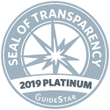BACKGROUND
Radioactive iodine therapy is an important treatment option for patients with thyroid cancer after undergoing surgery. For many years, almost all patients with thyroid cancer received radioactive iodine therapy, often in high doses (100-150 mCi). However, more recently, the use of radioactive iodine therapy has markedly decreased as it was apparent that patients with low risk cancers did not gain much benefit in this treatment. Currently, the American Thyroid Association guidelines are recommending that radioactive iodine therapy be reserved for patients with cancers that have intermediate or high-risk features. Further, the doses used also have dropped to 50-75 mCi for intermediate risk cancers and dose of 100 mCi and higher reserved for the most aggressive/highest risk cancers.
One concern about radioactive iodine therapy has always been whether this treatment might be increasing patients’ risk of developing other cancers. Previous large studies that included national populations have shown that radioactive iodine does slightly increase the risk of developing two blood cancers called acute myeloid leukemia and chronic myeloid leukemia. A “leukemia” is the uncontrolled growth of white blood cells that normally help the body combat infections.
This study further investigated additional cancers involving other body organs after receiving radioactive iodine.
THE FULL ARTICLE TITLE
Kim KJ et al 2023 Linear association between radioactive iodine dose and second primary malignancy risk in thyroid cancer. J Natl Cancer Inst. Epub 2023 Feb 23. PMID: 36821433.
SUMMARY OF THE STUDY
This study looked back at Korean patients diagnosed with thyroid cancers from 2014 to 2017 at least a year after their diagnosis. All of the study participants had their whole thyroid glands surgically removed, did not receive any prior radiation therapy, and did not carry any other cancer diagnoses. Approximately 217,000 patients from the Korean National Health Insurance Service–National Health Information Database (NHIS-NHID) met satisfactory criteria to be involved in the study.



